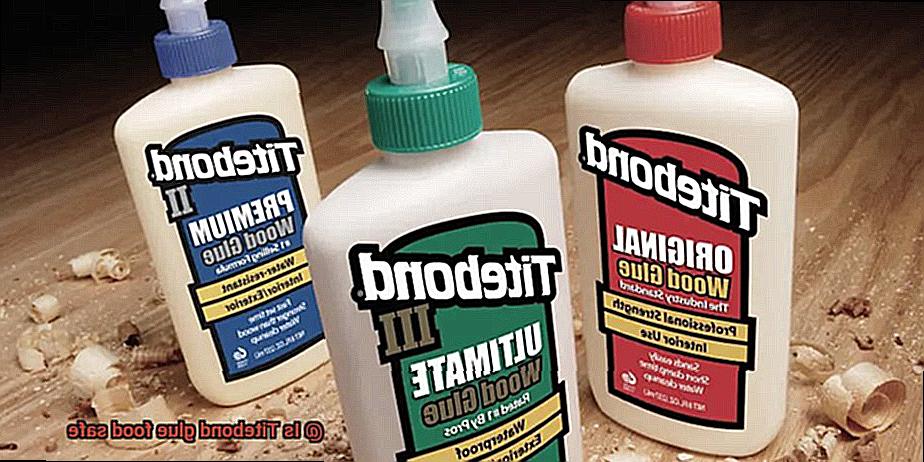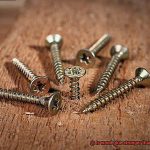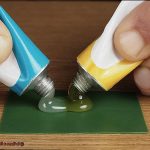Title: Titebond Glue and Food Safety: A No-Nonsense Guide
Introduction:
Contents
- 1 What is Titebond Glue?
- 2 Is Titebond Glue Safe for Food Contact?
- 3 Understanding FDA Approval for Indirect Food Contact
- 4 Titebond Original Wood Glue and Food Safety
- 5 Titebond II Premium Wood Glue and Food Safety
- 6 Titebond III Ultimate Wood Glue and Food Safety
- 7 Following Manufacturer’s Instructions for Optimal Safety
- 8 Potential Allergens or Sensitivities to Consider
- 9 Conclusion
Whether you’re a DIY guru or a woodworking pro, making sure the materials you use in projects that involve food are safe is a top priority. So, if you’ve ever wondered whether Titebond glue is food safe, we’ve got you covered. In this blog post, we’ll give you all the juicy details so you can make an informed decision.
Titebond has been a go-to adhesive brand for years, known for its reliability and versatility. But when it comes to food-related applications, we need to take extra precautions. To determine if Titebond glue is safe for food use, we’ll consider factors like ingredients, certifications, and regulations.
Our mission here is to provide you with a no-nonsense guide that combines expert knowledge with practical insights. We want to ensure that your culinary or DIY creations are not only amazing but also safe to devour. So join us as we explore the composition of Titebond glue, examine industry certifications, and unravel the regulations surrounding its use in food-related projects.
By the end of this post, you’ll have all the info you need to decide if Titebond glue is right for your food-safe endeavors. Let’s jump right in.
What is Titebond Glue?
In the world of woodworking, having a reliable adhesive is paramount to creating beautiful, durable projects. Enter Titebond Glue, the go-to choice for professionals and hobbyists alike. Created by Franklin International, a trusted name in adhesives and sealants, Titebond Glue is the secret weapon that ensures your woodworking endeavors stand the test of time.
One of the standout features of Titebond Glue is its unrivaled bond strength. Whether you’re constructing furniture, crafting cabinetry, or honing your woodworking skills, Titebond Glue guarantees that your glued joints stay secure throughout the years. With this adhesive in your arsenal, you can trust that your hard work will withstand any challenge.
Not only does Titebond Glue offer unmatched strength, but it also boasts incredible ease of use. Its smooth consistency allows for effortless application and spreading, minimizing messes during the gluing process. Say goodbye to drips and runs that can ruin your masterpieces. Moreover, Titebond Glue dries clear, leaving no unsightly residue or glue lines on your finished project.
For woodworking enthusiasts who value a flawless finish, Titebond Glue is a dream come true. It offers exceptional sandability, allowing you to effortlessly sand down the dried glue without clogging or damaging your sandpaper. This seamless blending of glued joints with the surrounding wood surface ensures a polished result that will leave onlookers in awe.
Now, let’s address the burning question: Is Titebond Glue food safe? While Titebond Original Wood Glue is FDA approved for indirect food contact—meaning it can be used on surfaces that come into contact with food but are not directly consumed—it is not recommended for direct food contact or continuous immersion in water. If you need an adhesive for cutting boards, utensils, or other items that come into direct contact with food, Titebond III Ultimate Wood Glue is the answer. With its FDA approval for both indirect and direct food contact, you can have complete peace of mind.
However, if food safety is your top priority, it’s worth noting that there are other adhesives on the market specifically formulated and certified as food safe. These products have undergone rigorous testing and meet strict FDA regulations for food-related applications.
Is Titebond Glue Safe for Food Contact?
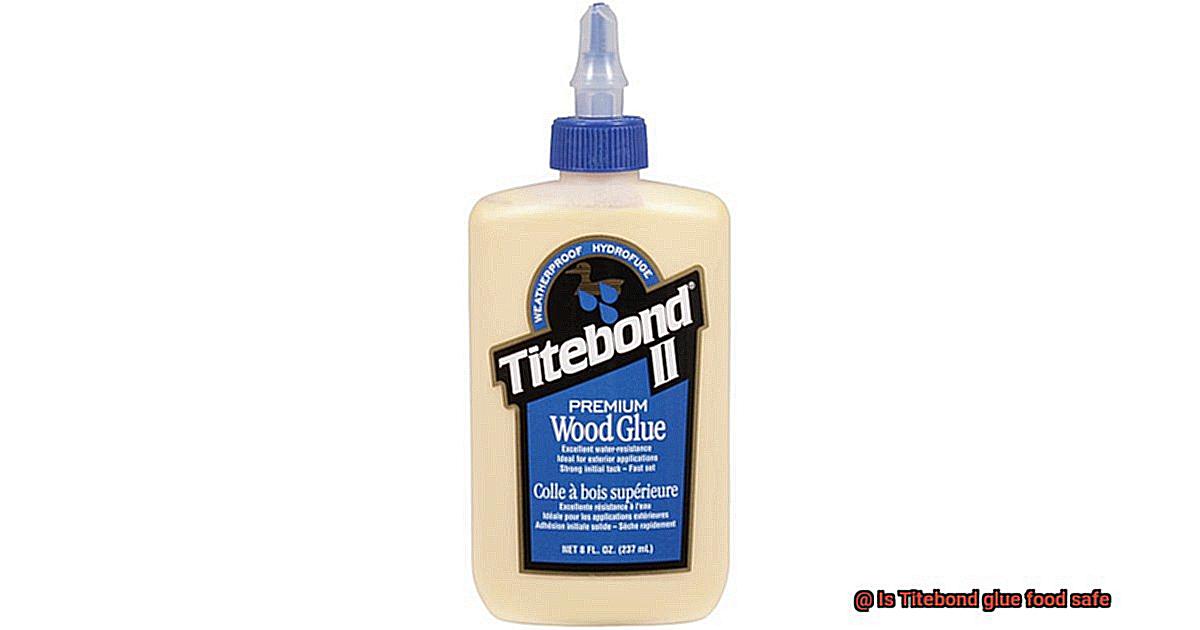
When it comes to woodworking projects, craftsmen rely on Titebond Glue for its strong bond and reliability. But what about using it in projects that involve food contact? Is Titebond Glue safe to use in these situations? As an expert on the subject, I’m here to shed some light on this important question.
Titebond offers a range of wood glues, including their popular Original Wood Glue, along with specialized formulas like Titebond III Ultimate Wood Glue and Titebond II Premium Wood Glue. While these glues are non-toxic when fully cured and designed for wood surfaces, they are not intended for direct food contact or for use on cutting boards or other food preparation surfaces.
The primary concern with using any glue for food contact is the potential for harmful chemicals or toxins to leach into the food. Titebond wood glues are not recommended for direct food contact because they are not specifically formulated for this purpose. Although they may be non-toxic when cured, it’s always best to err on the side of caution when it comes to food safety.
To ensure the safety of your food, it’s recommended to use adhesives that are explicitly labeled as food-safe or FDA-approved for direct contact with food. There are specific glues available that are formulated specifically for food contact applications, such as epoxy adhesives or food-safe silicone sealants. These products have undergone rigorous testing and certification to meet the necessary safety standards for direct food contact.
Remember, while Titebond glues can be trusted for their strong bond and reliability in woodworking projects, they are not intended for use in applications involving food contact. Always read the manufacturer’s instructions and choose the appropriate adhesive based on your specific project needs.
Understanding FDA Approval for Indirect Food Contact
Today, we’re delving into a vital topic that often goes unnoticed but is crucial for maintaining food safety: FDA approval for indirect food contact. We all adore using Titebond Glue for our woodworking projects, but it’s essential to comprehend its limitations when it comes to food-related applications. Let’s dive in and gain a deeper understanding.
The Role of the FDA:
- The FDA serves as the regulatory body in the United States responsible for safeguarding consumer health by ensuring the safety of products that come into contact with food.
- It enforces specific regulations and guidelines for substances that indirectly touch food, including adhesives used in food packaging or processing equipment.
Food Contact Substances (FCS):
- The FDA classifies materials that indirectly contact food as Food Contact Substances (FCS).
- Adhesives, coatings, and other types of packaging materials fall under this category.
FDA Approval Process:
- Manufacturers of adhesives must comply with FDA regulations for FCS to establish the safety of their products for indirect food contact.
- To attain approval, manufacturers submit a comprehensive Food Contact Notification (FCN) to the FDA.
- FCNs provide detailed information about the adhesive’s composition, intended use, and any potential risks associated with its interaction with food.
Safety Assessment:
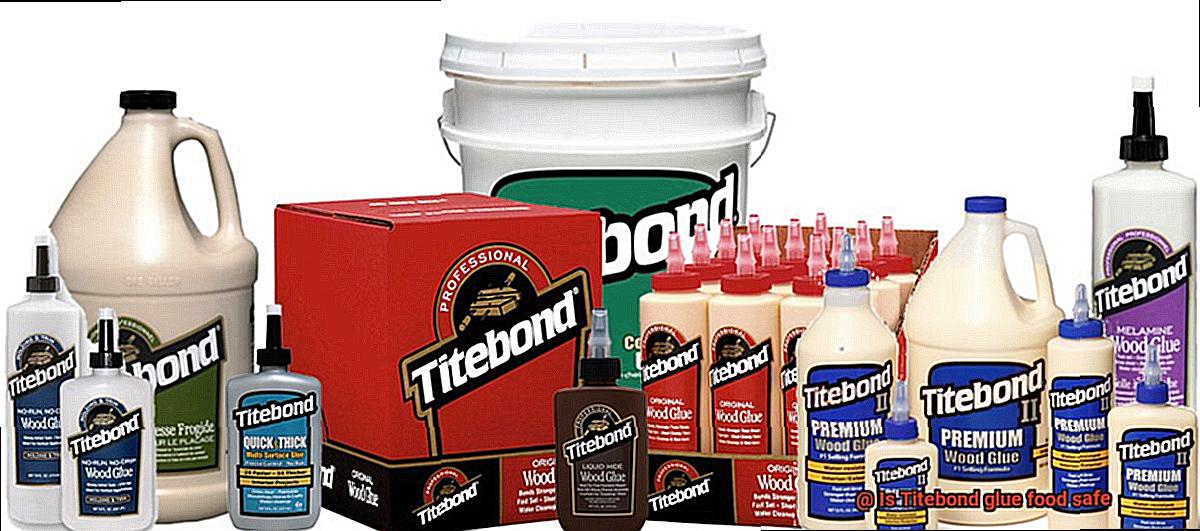
- The FDA evaluates the FCN and conducts a thorough safety assessment to determine if the adhesive meets their stringent standards.
- Factors taken into consideration include potential chemical migration into food, toxicity levels, and impact on food quality.
Limitations of FDA Approval:
- It is important to note that FDA approval for indirect food contact does not imply that the adhesive can be used directly on food or ingested.
- Separate regulations and approval processes exist for substances intended for direct food contact.
Ensuring Safety:
- To ensure the adhesive has been approved for indirect food contact, look for FDA compliance statements on the packaging or labels.
- Adhere to the manufacturer’s instructions and guidelines meticulously to minimize any potential risks.
Titebond Original Wood Glue and Food Safety
You may have wondered about the food safety aspects of using Titebond Original Wood Glue. Let’s delve into this topic and discover what you need to know.
When it comes to using Titebond Original Wood Glue for food-related applications, the primary concern is whether the glue contains any harmful substances that could potentially leach into the food.
Fortunately, Titebond Original Wood Glue is FDA approved for indirect food contact. This means that it is perfectly safe to use on surfaces that come into contact with food, such as cutting boards or kitchen utensils.
One of the key reasons why Titebond Original Wood Glue is considered safe for food-related applications is its non-toxic nature when dry. Unlike some other glues on the market, Titebond Original Wood Glue does not contain any harmful chemicals like formaldehyde or solvents. You can rest assured that these substances will not leach into your food and pose any potential harm.
Another significant factor to consider when using Titebond Original Wood Glue around food is its water-based formula. Because it is water-based, this glue does not release any toxic fumes or odors. This makes it an excellent choice for use in the kitchen, as you don’t have to worry about any unpleasant smells or harmful vapors contaminating your food.
However, it’s important to note that while Titebond Original Wood Glue is safe for indirect food contact, it should not be ingested. Therefore, avoid using this glue in direct contact with food that will be consumed. Instead, reserve it for surfaces such as cutting boards or utensils that will only briefly come into contact with food.
Titebond II Premium Wood Glue and Food Safety
If you’re considering using this glue in food-related applications, such as cutting boards or serving utensils, it’s important to understand its limitations when it comes to food safety. In this article, we will delve into the reasons why Titebond II is not suitable for direct contact with food and discuss the precautions you should take when using it in food-related projects.
FDA Approval and Direct Food Contact:
Titebond II Premium Wood Glue does not have FDA approval for direct food contact. This means that it should not be used in situations where it will come into direct contact with food intended for consumption. The glue contains chemicals, such as polyvinyl acetate (PVA), which are not considered food-safe.
Safe Use Once Cured:
If the glue is used to bond wooden pieces together, and there is no direct contact with food, it should be safe once fully cured. Curing time can vary depending on factors such as temperature and humidity, but it typically takes around 24 hours for Titebond II to fully cure. However, it is still recommended to use a food-safe finish over the wood surface to create a protective barrier between the glue and the food.
Food-Safe Finishes:
To further enhance safety, applying a food-safe finish over the wood surface can provide an additional layer of protection against potential chemical leaching from the glue. Food-safe finishes such as mineral oil or natural waxes create a barrier that prevents direct contact between the glue and the food, ensuring that no potentially harmful substances transfer onto the items being prepared or served.
Manufacturer’s Instructions and Expert Advice:
When using wood glue in food-related applications, always follow the manufacturer’s instructions. If you have any doubts or concerns about the safety of a specific wood glue for a particular application, it’s best to consult with the manufacturer or seek advice from a woodworking professional who can provide expert guidance. They will have the knowledge and experience to recommend suitable alternatives or additional precautions to ensure food safety.
Titebond III Ultimate Wood Glue and Food Safety
In the world of woodworking, Titebond III Ultimate Wood Glue is renowned for its exceptional bonding strength and long-lasting durability. However, when it comes to projects involving food-related surfaces like cutting boards or kitchen utensils, ensuring food safety becomes a critical consideration. This begs the question: can Titebond III Ultimate Wood Glue be safely used on surfaces that come into direct contact with food? Let’s explore the safety considerations and necessary precautions when working with this adhesive.
The Potential Health Risks:
Titebond III Ultimate Wood Glue is FDA approved for indirect food contact, which means it is safe for use on surfaces that won’t directly touch food. However, it contains chemicals like formaldehyde that can be harmful if ingested. Inadequate curing or exposure to high heat or moisture may lead to the migration of these chemicals into the food, posing potential health risks.
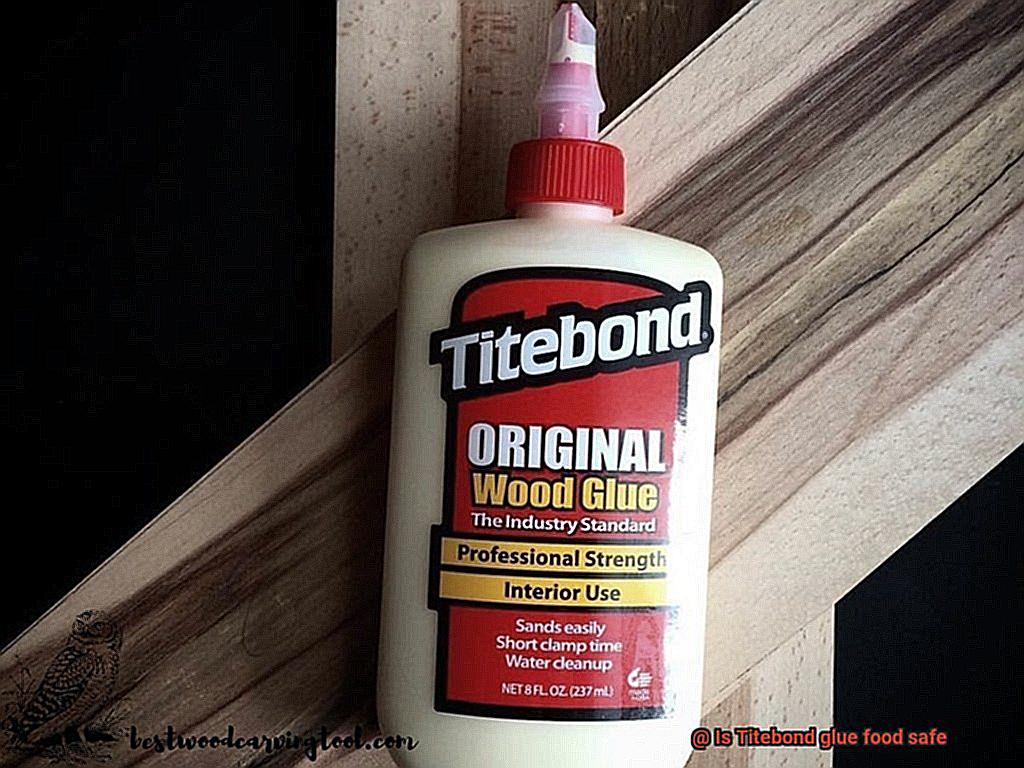
Necessary Precautions:
To prioritize food safety, it is advisable to use a food-safe adhesive specifically designed for direct food contact. If you are uncertain about using Titebond III Ultimate Wood Glue for a particular project, consult the manufacturer’s guidelines or contact their customer service for specific recommendations.
Differences Between Food-Safe Glues and Other Types of Glues:
Food-safe glues are formulated without harmful chemicals like formaldehyde and are engineered to withstand high temperatures and frequent washing. These specialized adhesives provide a safer option for surfaces that come into direct contact with food. On the other hand, regular wood glues like Titebond III Ultimate Wood Glue are suitable for indirect food contact but not recommended for direct contact.
Conclusion:
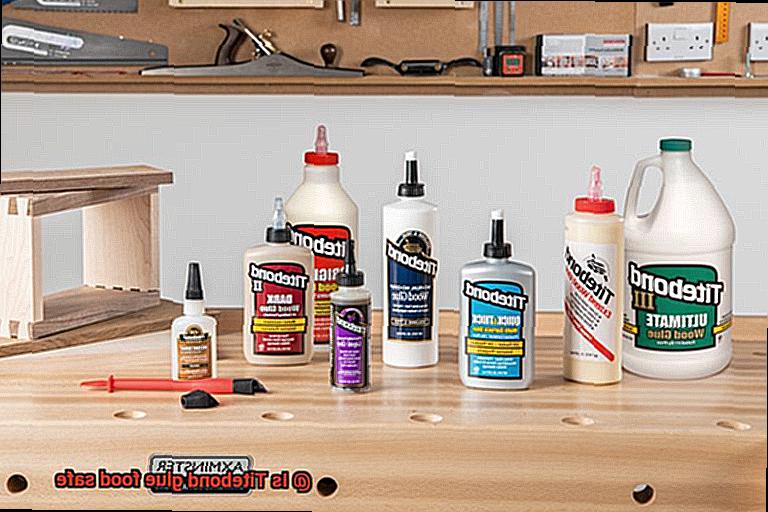
While Titebond III Ultimate Wood Glue remains a reliable choice for woodworking projects, prioritizing food safety is essential when working on surfaces that directly touch our meals. Opting for a food-safe adhesive specifically designed for this purpose ensures peace of mind and safeguards our health as well as the well-being of those who enjoy our culinary creations.
Following Manufacturer’s Instructions for Optimal Safety
When it comes to woodworking projects involving food-related items like cutting boards or kitchen utensils, ensuring food safety is paramount. Titebond glue is a popular choice for woodworking, but it is crucial to follow the manufacturer’s instructions for optimal safety. In this article, we will explore the importance of following these instructions and how they can help ensure the safety of your projects.
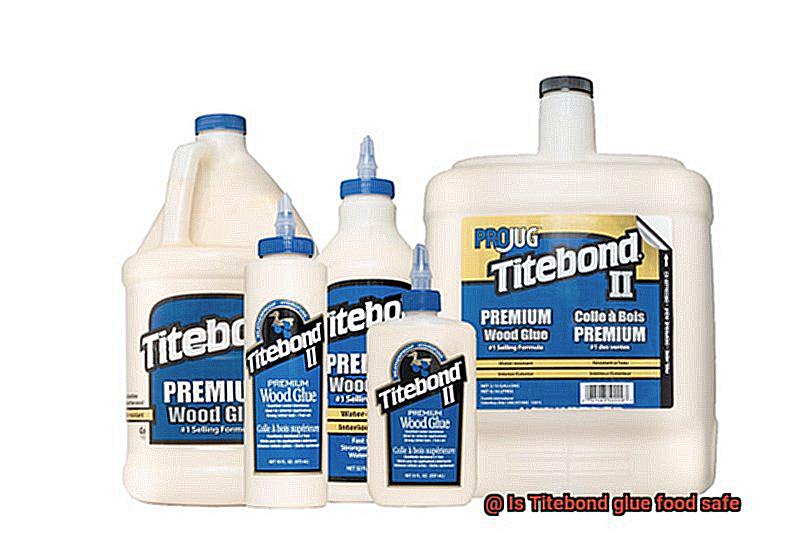
Correct Application Techniques:
To guarantee a secure and bacteria-free bond, the manufacturer’s instructions provide detailed guidance on how to apply Titebond glue correctly. These instructions ensure even application and strong adhesion to the wood surface. Gaps or weak spots in the adhesive can compromise the integrity of the project and potentially lead to food contamination.
Minimizing Health Risks:
Although Titebond glue does not contain toxic ingredients, it should still be handled with care. The manufacturer’s instructions include safety precautions to minimize potential health risks associated with using the glue. By wearing gloves, avoiding direct contact with skin or eyes, and working in a well-ventilated area, you can prevent accidental exposure to the glue and protect your health.
FDA Approval for Indirect Food Contact:
Certain variants of Titebond glue, like Titebond II Extend Wood Glue, are labeled as “FDA approved for indirect food contact.” This means that these glues have undergone testing and are considered safe for use in projects involving items that come into contact with food indirectly. However, caution should still be exercised.
Precautions for Direct Food Contact:
Even with FDA approval for indirect food contact, additional precautions are necessary when using Titebond glue in projects that come into direct contact with food. Surfaces glued with Titebond should be thoroughly cleaned and sanitized before coming into direct contact with food. It is also important to avoid ingesting the glue or intentionally applying it to surfaces that directly touch food.
Potential Allergens or Sensitivities to Consider
When it comes to woodworking projects involving food-related items, food safety is paramount. Titebond glue, a trusted choice for woodworking enthusiasts, can be safely used with food if certain precautions are taken. Delve into this captivating article as we explore the potential allergens or sensitivities that should be considered when evaluating the safety of Titebond glue for use with food.
Latex Allergies:
Let’s start by tackling the issue of latex allergies, which are relatively common and can cause anything from mild discomfort to severe reactions. Here’s the good news: Titebond glue doesn’t contain a trace of latex, making it a safe bet for individuals with latex allergies.
Formaldehyde Sensitivities:
Now, let’s turn our attention to formaldehyde, a substance that may ring alarm bells for some. While Titebond glue itself is free from formaldehyde, there might be minimal release of this compound during the curing process. However, fret not, as this release is generally insignificant when using Titebond glue with food items. Nonetheless, individuals with formaldehyde allergies or sensitivities should exercise caution and consider alternative glues that don’t release this compound.
Sensitivities to Manufacturing Chemicals:
Intriguingly enough, some people may have sensitivities or allergies to specific chemicals used in the manufacturing of Titebond glue. Think benzene or toluene—a minor nuisance for most but a potential menace for a select few. Although these chemicals are used in small amounts and strictly regulated, individuals with known sensitivities or allergies should consult the product’s safety data sheet (SDS) or reach out to the manufacturer for detailed ingredient information.
Variations in Titebond Glue:
Prepare to embark on an enlightening journey into the world of Titebond glue variations. With a range of different glues formulated for specific applications, there’s a wealth of options at your fingertips. However, it’s crucial to tread carefully, as some variations might contain additives or ingredients that could be potential allergens or sensitizers. Before diving into your food-related projects, take a moment to thoroughly peruse the product labels and instructions.
qwdj4aQSZlg” >
Conclusion
In conclusion, it is crucial to assess the safety of Titebond glue when considering its use in food-related applications. While Titebond offers a range of glues, not all of them are suitable for direct contact with food. It is important to carefully read the product labels and look for specific certifications such as FDA approval or NSF certification to ensure that the glue is deemed safe for food contact.
Furthermore, it is recommended to choose glues specifically designed for food-related applications, such as Titebond III Ultimate Wood Glue. This particular glue has been formulated with FDA-approved ingredients and is explicitly labeled as safe for indirect food contact.
However, even with a food-safe glue, it is essential to understand its limitations. Food-safe glues are typically meant for bonding non-porous surfaces such as ceramics or glass rather than porous materials like wood or fabric. Additionally, they may not withstand extreme temperatures or prolonged exposure to moisture.
Ultimately, when working on projects involving food or drink containers, it is advisable to consult with professionals or experts in the field who can provide guidance on using appropriate adhesives that meet specific safety requirements.

